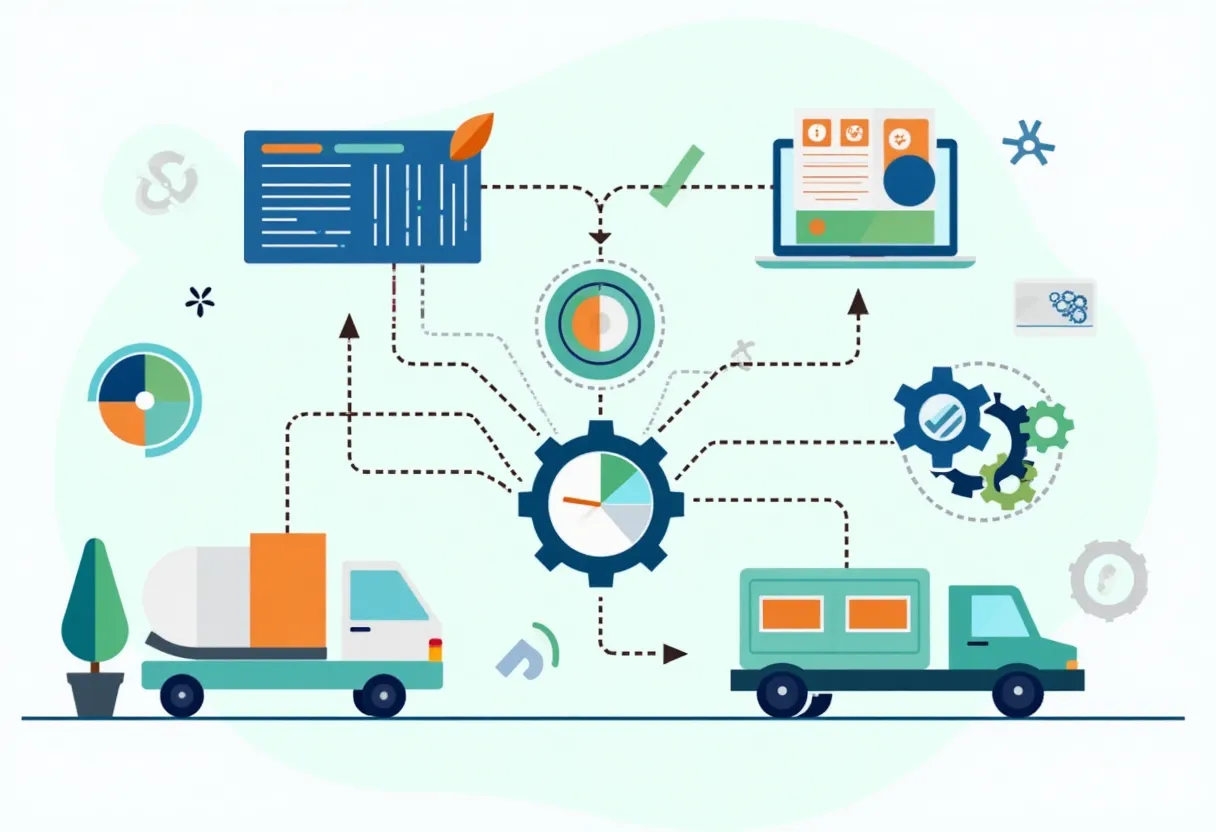الجمع بين إدارة الخسائر واستخراج الأسطول من أجل التشغيل الآلي الكامل

Underwriting automation has become a cornerstone of modern insurance operations, enabling insurers to accelerate decision-making while improving accuracy. In particular, combining underwriting automation with cutting-edge AI API combo solutions for insurance data has paved the way for streamlined workflows. A crucial aspect of this automation is the seamless integration of loss run data and fleet extraction, which together enable an end-to-end submission automation insurance process, significantly reducing manual intervention and accelerating underwriting cycles.
What Are Loss Runs and Fleet Extracts, and Why Are They Important?
Understanding Loss Runs
Loss runs are detailed reports outlining the claims history of an insured party over a specific period. These reports are critical in underwriting as they reveal the frequency, severity, and types of claims filed, allowing underwriters to assess risk profiles accurately. Loss run reports commonly include data such as claim dates, reserve amounts, settlements, and claim status. Access to timely and accurate loss run information ensures underwriters can identify trends, flag potential fraud, and price premiums appropriately, making it an indispensable input in the underwriting process.
What is Fleet Extraction?
Fleet extraction refers to the process of gathering and analyzing data from commercial vehicle fleets, encompassing various metrics critical to assessing insurance risk. This data may include vehicle types, mileage, driver information, incident records, GPS tracking statistics, and maintenance logs. Since fleet insurance involves multiple vehicles with diverse usage patterns, extracting and consolidating this data accurately supports insurers in evaluating aggregate risk levels and crafting tailored policy terms. Proper fleet data utilization enhances risk segmentation and underwriting precision.
Connection to Underwriting Automation
Integrating loss run and fleet data directly into underwriting automation frameworks ensures that decisions are based on comprehensive and real-time information. Accuracy and timeliness become critical, as relying on outdated or incomplete data can lead to mispricing or inadequate risk assessment. By feeding these datasets into AI-powered underwriting tools like those within Inaza’s Decoder AI Data Platform, insurers enhance their ability to make swift, data-driven decisions, reducing the need for manual reviews and expediting policy issuance.
How Does Combining These Elements Create a Unified Underwriting Flow?
Synergy Between Loss Runs and Fleet Data
When combined, loss runs and fleet extraction data provide a holistic view of risk essential for commercial auto underwriting. Loss runs offer insight into historical claims behavior, while fleet data reveals operational characteristics that influence future risk exposure. This synergy removes blind spots and enables a more nuanced risk evaluation. For instance, an insurer can correlate frequent small claims (observed in loss runs) with high-mileage drivers or poorly maintained vehicles in the fleet data, leading to more informed underwriting adjustments and pricing models.
The Role of Technology in Integration
Advanced AI and API-driven technologies facilitate the seamless merging of these diverse datasets into a single automated workflow. Inaza’s AI Data Platform exemplifies this capability by orchestrating data ingestion from multiple sources, including loss run reports and fleet management systems, then normalizing and enriching this information in real-time. Through robust APIs, insurers can integrate these workflows directly into their underwriting systems, ensuring continuous data flow for dynamic risk assessment and instant quote generation.
Benefits of a Unified Flow
Adopting a unified underwriting flow combining loss run and fleet extraction underpins several operational advantages:
- Significantly reduced processing times by automating data retrieval and analysis.
- Decreased manual errors and inconsistencies common with siloed data entry.
- Improved risk pricing accuracy supported by comprehensive data views.
- Enhanced scalability, enabling rapid handling of high volumes of commercial submissions.
These benefits empower underwriting teams to focus on complex cases while routine risks are expedited with confidence.
What is End-to-End Submission Automation in Insurance?
Definition and Process
End-to-end submission automation refers to the fully digital process of receiving, processing, underwriting, and binding insurance policies without manual intervention. Starting from application intake, automated workflows validate data, extract relevant information such as loss runs and fleet details, perform risk analysis, and generate quotes, culminating in policy issuance. This streamlined process reduces cycle times, optimizes resource allocation, and enhances the overall customer experience.
Integration of Loss Runs and Fleet Data in Automation
Integrating loss run and fleet extraction into submission automation presents several technical and operational challenges, including diverse data formats, ensuring data quality, and maintaining regulatory compliance. However, AI underwriting tools equipped with smart verification and data enrichment capabilities – like Inaza’s Claims Pack and Decoder technologies – address these issues by standardizing inputs and detecting inconsistencies automatically. These tools ensure that loss run and fleet data are integral to underwriting decisions, not afterthoughts, enabling a truly end-to-end automated submission process.
Real-world Applications
Industry leaders who have adopted end-to-end underwriting automation leveraging combined loss run and fleet extraction data report measurable improvements such as reduced underwriting cycle times by up to 70%, increased quote-to-bind ratios, and decreased operational costs. These improvements translate into faster responses for customers and better allocation of underwriting resources towards complex risks requiring human expertise.
What Are Effective AI Underwriting Tools for Insurers?
Key Features and Capabilities
Modern AI underwriting tools go beyond simple automation to include features such as:
- Real-time data analytics providing instant risk scoring.
- Claims image recognition for validating incident details.
- Fraud detection modules that analyze patterns across submissions.
- API integration capabilities for seamless connectivity with external data sources.
These capabilities help underwriters to identify hidden risks or fraud, ensure completeness of data, and support fast, accurate underwriting decisions even at high volumes.
Choosing the Right AI Solutions
Selecting the best AI underwriting tools depends on insurers’ unique needs such as scalability, customization options, ease of integration with existing legacy systems, and ongoing support. Platforms like Inaza Central provide scalable AI API combos designed to integrate fleet and loss run extraction with other policy lifecycle automation functions, ensuring a future-proof foundation for evolving insurance demands.
Cost-Benefit Analysis
Investing in AI underwriting automation yields strong return on investment (ROI) through:
- Lower operational costs by reducing manual processing.
- Increased premium accuracy preventing leakage.
- Improved customer satisfaction due to faster response times.
- Reduced claims fraud generating savings on payouts.
Many insurers report that the initial deployment costs are recouped within months of implementation, especially when combining loss run and fleet data into a unified automation strategy.
How to Get Started with Combining Loss Run and Fleet Extraction for Automation?
Steps to Implement Integration
Launching an integrated underwriting automation system involves several key steps:
- Assessment: Evaluate current underwriting workflows and data sources.
- Stakeholder Engagement: Involve underwriting, IT, and data teams early for alignment.
- Technology Selection: Choose AI API providers that support both loss run and fleet extraction data integration.
- Pilot Testing: Deploy initial pilots to validate data flow and accuracy.
- Training and Change Management: Ensure that staff are trained on new automation tools and workflows.
Following these steps can minimize disruption while unlocking automation benefits efficiently.
Can Existing Systems Work with New Solutions?
Most modern AI platforms, including those from Inaza, are designed for easy integration with legacy insurance systems. APIs and modular software architectures enable insurers to retain existing investments while enhancing capabilities through AI-driven underwriting automation. To ensure smooth adoption, companies should conduct thorough compatibility audits and plan phased rollouts, allowing gradual transition without disrupting business continuity.
Measuring Success
Post-integration, it is vital to track metrics such as:
- Underwriting turnaround times.
- Quote-to-bind conversion rates.
- Accuracy of risk assessments and premium calculations.
- Reduction in manual interventions and error rates.
Regular review of these KPIs supports continuous process improvement and validates ROI from technology investments.
Conclusion
Combining loss run and fleet extraction unlocks a powerful, unified underwriting automation workflow that insurers can deploy rapidly, often within a week. This integration not only accelerates the submission and policy issuance process but also enhances risk evaluation with enriched, timely data. Leveraging advanced AI underwriting tools such as those offered by Inaza’s AI Data Platform and Inaza Central ensures scalability, accuracy, and operational efficiency throughout the policy lifecycle.
As underwriting automation continues to evolve, insurers who adopt end-to-end solutions will gain competitive advantage through cost savings and improved customer experiences. For those interested in exploring how these technologies can transform their underwriting workflow, contact us today or learn more about Inaza Central, a solution designed to integrate fleet and loss run extraction for seamless automation.
لمزيد من الأفكار حول الدور الحاسم لدمج التقنيات الآلية مع إشراف الخبراء، فكر في قراءة مناقشتنا المتعمقة حول الإنسان - في حلقة المحادثات الحساسة.





